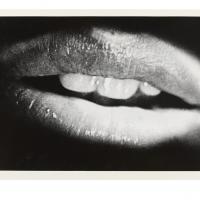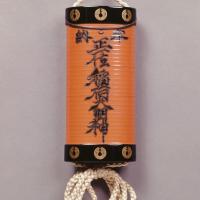Toshiba Gallery of Japanese Art, Victoria & Albert Museum | reviews, news & interviews
Toshiba Gallery of Japanese Art, Victoria & Albert Museum
Toshiba Gallery of Japanese Art, Victoria & Albert Museum
Varied achievements of a remarkable civilisation shine in this renovated space

Every object tells a story, nowhere more so than in a museum. The Victoria & Albert has been busy retelling as many stories as it can by rearranging, refurbishing, adding and subtracting from the millions of objects it has at its disposal to display, study and conserve.
The simply named FuturePlan, which started in 2001 and has several more years to run, has been redoing, reviewing and renewing the entire museum, examining one by one the extraordinary holdings of the V&A, sometimes across cultures, sometimes with a horizontal chronology across categories, and sometimes from beginning to now. So far, 70% of the museum has been revitalised and it shows: ever-increasing visitors come for Bowie and McQueen, but see a newly minted museum, too.
 This week, it's the turn of the Toshiba Gallery of Japanese Art to reopen with a mix of high and popular culture, from 600 AD on (there are far, far older Japanese ceramics on the sixth floor in the superb Ceramics galleries). It is the history of Japan in 550 objects, including about 30 new acquisitions, chosen from a mere 48,000 museum holdings, over half of them the famous Edo “floating world” woodblock prints done in Tokyo, and many light-sensitive. (For the cantankerous lot who complain about objects in storage, just think of a museum as a “library of things”, partly kept for reference, and never with everything out on the shelves or on loan at once.)
This week, it's the turn of the Toshiba Gallery of Japanese Art to reopen with a mix of high and popular culture, from 600 AD on (there are far, far older Japanese ceramics on the sixth floor in the superb Ceramics galleries). It is the history of Japan in 550 objects, including about 30 new acquisitions, chosen from a mere 48,000 museum holdings, over half of them the famous Edo “floating world” woodblock prints done in Tokyo, and many light-sensitive. (For the cantankerous lot who complain about objects in storage, just think of a museum as a “library of things”, partly kept for reference, and never with everything out on the shelves or on loan at once.)
The earliest object is a sixth-century, round-bottomed stoneware jar which was buried with a grandee, while the newest encompasses such technology as Sony’s 1958 portable transistor radio, as well as the Sony Walkman of 1979, Noritaka Tatehana’s avant-garde, totally improbable heel-less shoes of 2014 (surely a version was worn by Victoria Beckham?, bottom image), not to mention a Hello Kitty rice cooker, toaster and kettle from last year in shocking pink. There are also some innovative and beautiful contemporary baskets and pottery.
We are introduced to the marvels on view by a huge 1870s bronze incense burner, complete with peacocks. One of the most helpful displays tells us about and shows us very succinctly the two main co-existing belief systems: Shinto – the way of the gods – and Buddhism. There is a case of models wearing the full armour of the samurai (see Gallery, below), that professional and fearsome military caste; a very sophisticated oriental version of – perhaps – the Cossacks, including a life-size, fully-garbed and rather eerie 19th-century samurai model; and a 15th-century, fearsomely sharp steel sword blade remounted in an 18th-century gold and copper scabbard.
There is the tea ceremony too, of course, with elegant lacquered boxes and caddies and delightful porcelain cups, and kimonos, including an amazing boy’s printed wool kimono with an image of a plane and its 1937 aerial route from Tokyo to Croydon (top image) – the first such flight from Japan to Britain – not to mention more imagery showing Mount Fuji and Tower Bridge. Costumes for Kabuki actors are as elaborate as might be imagined, and a golden six-panel, 17th-century screen depicts both the exterior and interior of a Kabuki theatre, complete with hordes of visitors and actors (see Gallery, below).
 There is a case of 19th-century ivory and wood netsuke, and two cases of inro, the little beautifully wrought bags to which netsuke acted as toggles. And we are totally up to date with a little black dress by Issy Miyake, 2015, designed on the principle of origami from a single piece of fabric.
There is a case of 19th-century ivory and wood netsuke, and two cases of inro, the little beautifully wrought bags to which netsuke acted as toggles. And we are totally up to date with a little black dress by Issy Miyake, 2015, designed on the principle of origami from a single piece of fabric.
Paradoxically, what is termed the collection’s greatest treasure was made for the export market: the magnificent 17th-century Mazarin Chest (pictured above), made in Kyoto, with black lacquer, gold, silver and mother of pearl inlay, showing landscapes, mythical animals – dragons and phoenixes – and scenes from the Tale of Genji; through the Dutch East India Company, it was once owned by a French Cardinal. It symbolises, too, the encounters between East and West which had begun by the 16th century.
The gallery in its first incarnation in 1986, designed by Stanton Williams, was the first permanent display of Japanese art in Britain – the V&A had started collecting in 1852 – and also the first gallery in a national museum to be sponsored, by Toshiba, then as now.
 It is neatly sandwiched between China and Korea, and now flanked in the corridor by a new iteration of the Ho Gallery of Buddhist art from Asia, including Japan. The difficulties of Victorian-Edwardian galleries are here turned to advantage, the enormously high ceiling and useless mezzanine making the Toshiba airy and curiously relaxing. The design teams within the museum have rejuvenated the lighting, and even more pertinently the displays, which are outstanding in their clarity.
It is neatly sandwiched between China and Korea, and now flanked in the corridor by a new iteration of the Ho Gallery of Buddhist art from Asia, including Japan. The difficulties of Victorian-Edwardian galleries are here turned to advantage, the enormously high ceiling and useless mezzanine making the Toshiba airy and curiously relaxing. The design teams within the museum have rejuvenated the lighting, and even more pertinently the displays, which are outstanding in their clarity.
Blue labels give us history and context, and there are detailed labels for each object, as well as a series of short interactive films on various topics: how to arrange your kimono and sash, for example. There are even enough visitor benches – in a museum context, a minor miracle. This is a quiet triumph as an introduction to a complex and still hierarchical society, one that is often for the Westerner – in spite of the automobiles and technological products, as well as the country’s love of whisky – still lost in translation. Here, however, is a beguiling and appealing history lesson in three dimensions.
Gallery: click on first image to begin
rating
Share this article
The future of Arts Journalism
You can stop theartsdesk.com closing!
We urgently need financing to survive. Our fundraising drive has thus far raised £49,000 but we need to reach £100,000 or we will be forced to close. Please contribute here: https://gofund.me/c3f6033d
And if you can forward this information to anyone who might assist, we’d be grateful.

Subscribe to theartsdesk.com
Thank you for continuing to read our work on theartsdesk.com. For unlimited access to every article in its entirety, including our archive of more than 15,000 pieces, we're asking for £5 per month or £40 per year. We feel it's a very good deal, and hope you do too.
To take a subscription now simply click here.
And if you're looking for that extra gift for a friend or family member, why not treat them to a theartsdesk.com gift subscription?
more Visual arts
 'We are bowled over!' Thank you for your messages of love and support
Much-appreciated words of commendation from readers and the cultural community
'We are bowled over!' Thank you for your messages of love and support
Much-appreciated words of commendation from readers and the cultural community
 Lee Miller, Tate Britain review - an extraordinary career that remains an enigma
Fashion photographer, artist or war reporter; will the real Lee Miller please step forward?
Lee Miller, Tate Britain review - an extraordinary career that remains an enigma
Fashion photographer, artist or war reporter; will the real Lee Miller please step forward?
 Kerry James Marshall: The Histories, Royal Academy review - a triumphant celebration of blackness
Room after room of glorious paintings
Kerry James Marshall: The Histories, Royal Academy review - a triumphant celebration of blackness
Room after room of glorious paintings
 Folkestone Triennial 2025 - landscape, seascape, art lovers' escape
Locally rooted festival brings home many but not all global concerns
Folkestone Triennial 2025 - landscape, seascape, art lovers' escape
Locally rooted festival brings home many but not all global concerns
 Sir Brian Clarke (1953-2025) - a personal tribute
Remembering an artist with a gift for the transcendent
Sir Brian Clarke (1953-2025) - a personal tribute
Remembering an artist with a gift for the transcendent
 Emily Kam Kngwarray, Tate Modern review - glimpses of another world
Pictures that are an affirmation of belonging
Emily Kam Kngwarray, Tate Modern review - glimpses of another world
Pictures that are an affirmation of belonging
 Kiefer / Van Gogh, Royal Academy review - a pairing of opposites
Small scale intensity meets large scale melodrama
Kiefer / Van Gogh, Royal Academy review - a pairing of opposites
Small scale intensity meets large scale melodrama
 Jenny Saville: The Anatomy of Painting, National Portrait Gallery review - a protégé losing her way
A brilliant painter in search of a worthwhile subject
Jenny Saville: The Anatomy of Painting, National Portrait Gallery review - a protégé losing her way
A brilliant painter in search of a worthwhile subject
 Abstract Erotic, Courtauld Gallery review - sculpture that is sensuous, funny and subversive
Testing the boundaries of good taste, and winning
Abstract Erotic, Courtauld Gallery review - sculpture that is sensuous, funny and subversive
Testing the boundaries of good taste, and winning
 Edward Burra, Tate Britain review - watercolour made mainstream
Social satire with a nasty bite
Edward Burra, Tate Britain review - watercolour made mainstream
Social satire with a nasty bite
 Ithell Colquhoun, Tate Britain review - revelations of a weird and wonderful world
Emanations from the unconscious
Ithell Colquhoun, Tate Britain review - revelations of a weird and wonderful world
Emanations from the unconscious
 Rachel Jones: Gated Canyons, Dulwich Picture Gallery review - teeth with a real bite
Mouths have never looked so good
Rachel Jones: Gated Canyons, Dulwich Picture Gallery review - teeth with a real bite
Mouths have never looked so good





















Add comment